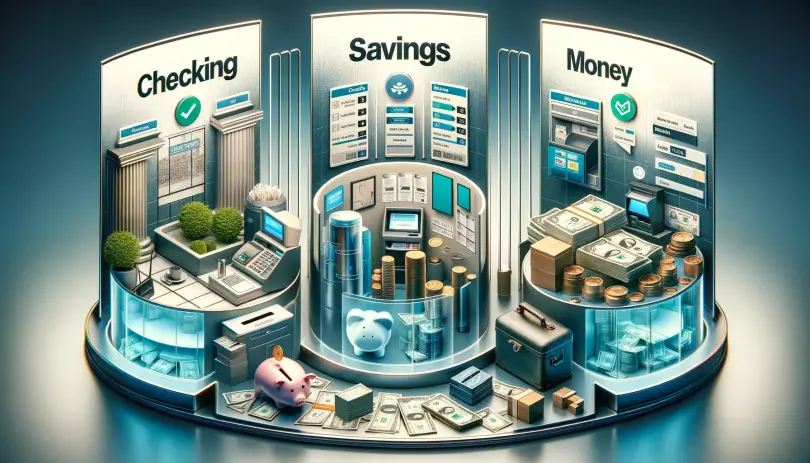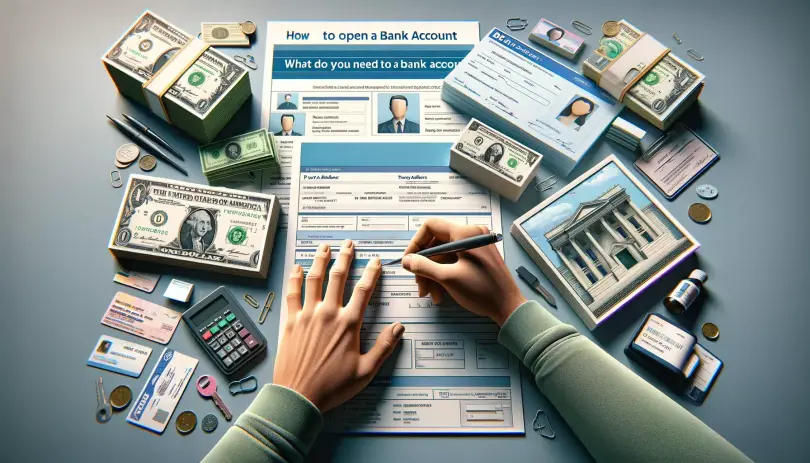How to Open a Bank Account: What You Need

Whether you’re tired of your old bank’s fees, seeking a better digital experience, or setting up a deposit for a younger family member, knowing how to open a bank account step by step is essential.
With a wide variety of banks and account types available, you have plenty of options to find the one that best fits your financial needs. But what are the steps to open a bank account, and how can you save time and effort along the way?
Let’s break down the process and get you set up quickly with this simple step-by-step guide:
- Choose the Right Account For You.
- Gather Necessary Documents and Details.
- Set Up Your Bank Account.
- Start Managing Your Money.
Step 1: Choose the Right Account For You
Before diving into how to set up a bank account, the first step is to select the right type. The two main options are checking and savings accounts.
Checking accounts are designed for daily transactions, including deposits, withdrawals, and payments. They offer easy access to funds via checks, debit cards, and ATMs. Typically, they provide little to no interest rates, but may charge monthly service fees.
As the name suggests, savings accounts are designed to help you grow your savings over time. They usually feature higher interest rates compared to checking accounts and are designed for less frequent withdrawals to encourage savings.
For more complex financial needs, consider a money market account — a hybrid that combines features of both checking and savings accounts. These accounts allow limited check writing and debit card access, while offering competitive, often tiered, interest rates based on your balance.

To determine how to open a bank account that aligns with your needs, evaluate your financial goals, spending habits, and saving objectives. A few key factors to consider when making your final choice include:
- Location and Accessibility: Consider the bank's physical locations and ATMs. Are there branches near your home or workplace? Do they offer extensive ATM access? Accessibility is vital for everyday banking and your convenience.
- Fees and Charges: Banks have varying fee structures. Be aware of monthly maintenance fees, ATM fees, overdraft charges, and other related expenses. Some financial institutions waive fees if you maintain a minimum balance or keep your account active.
- Interest Rate (APY): If you're considering a savings or money market account, pay attention to the interest rates offered. Annual Percentage Yield (APY) is a crucial metric to compare, as it reflects the total return you can expect on your deposit.
- Service Level: Look for additional services that enhance your banking experience. User-friendly mobile apps, reliable online banking, and efficient customer support can make a big difference.
Step 2: Gather Necessary Documents and Details
To comply with regulatory requirements and establish a secure relationship, banks require certain documents and personal information. This step ensures the bank can establish a secure and legal relationship with you as a customer. Here’s what you’ll typically need:
- Government-Issued Identification: This can be any official document that includes your photo and personal information, such as a driver's license, passport, or national ID card.
- Proof of Address: Acceptable documents include utility bills (electricity, water, gas), lease agreements, or government-issued documents like tax returns or voter registration cards.
- Social Security Number (SSN) or Tax Identification Number (TIN): Providing one of these is essential for tax reporting and to comply with anti-money laundering (AML) regulations.
- Initial Deposit: Depending on the bank and account type, you may be required to make an initial deposit to open your account.

Before visiting the bank, ensure all identification documents are current and valid. Different institutions may have specific requirements, so it’s important to check in advance. Visit the bank’s website or call them to obtain a comprehensive document checklist before applying.
Step 3: Set Up Your Bank Account
Once you’ve gathered your documents, it's time to submit your application. In most cases, when considering how to create a bank account, you have two options: apply online from the comfort of your home or visit a branch in person.
How to Create a Bank Account Online
So, what do you need to open a bank account online? Follow these steps on the bank’s official website:
- Locate and complete the online application form.
- Choose your account type (checking, savings, or money market).
- Enter your personal details as requested.
- Upload required identification documents.
- Review all entries carefully for accuracy.
- Submit your application.
- Look out for a confirmation message or email with next steps.
How to Open a Bank Account In Person
To open a bank account at a local branch, follow these steps:
- Visit a nearby bank and speak with a financial representative.
- Select the account type that meets your needs.
- Complete the application form, assisted by bank staff.
- Submit the required documents for verification.
- Review and confirm your application details.
- Receive account opening confirmation and any starter materials (debit card, checks, etc.).

Step 4: Start Managing Your Money
Once your account is approved and active, you’ll need to fund it. You can add money through:
- Cash deposit at a bank branch or ATM.
- Check deposit via branch or mobile banking app.
- Wire transfer from another bank or individual.
- Internal transfer from one of your existing accounts.
Final Thoughts
In 2025, 79% of adults worldwide are expected to have an account, a significant increase from 51% in 2011. This rise is largely driven by the growth of digital banking services, making financial management more accessible than ever before. Whether you're opening your first account or switching to a bank that better suits your needs, it’s a proactive step towards greater financial confidence. Use this guide to simplify the process, it’s easier than you might think.




